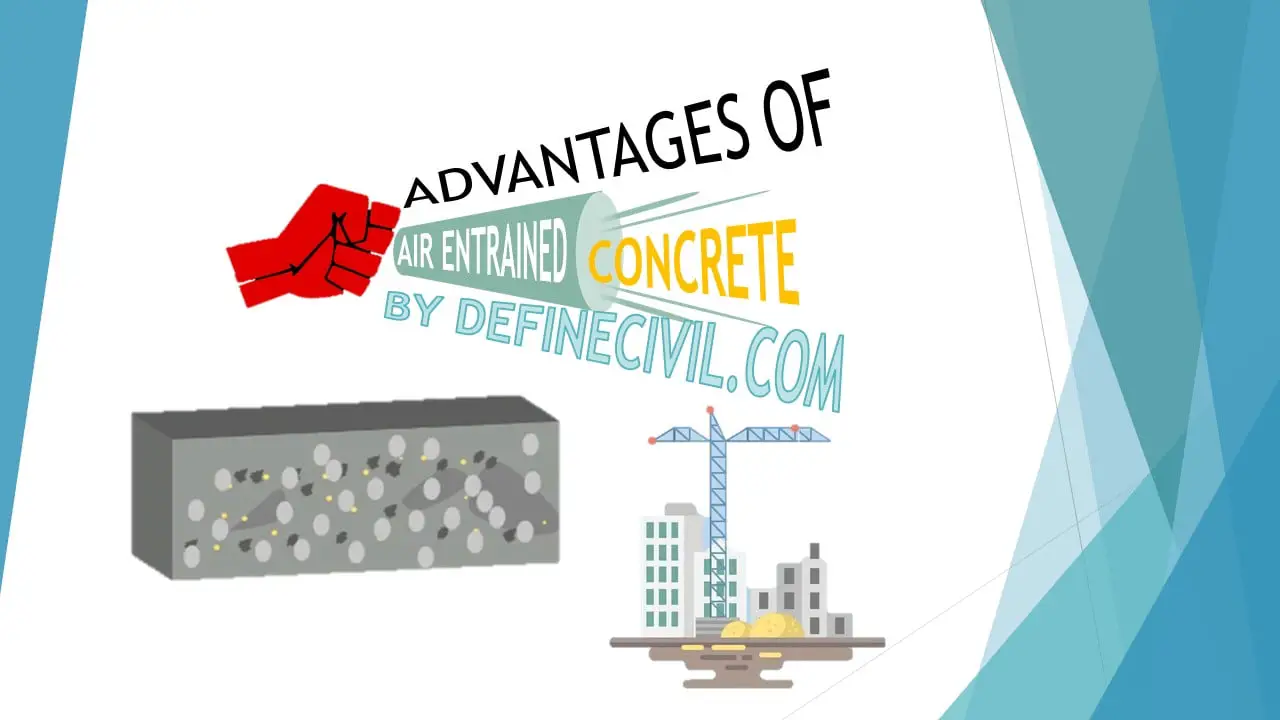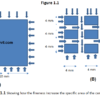There are multitude advantages of air-entrained concrete, it not only enhances the durability of the fresh concrete but also render resilience of hardened concrete.
We all know that concrete, though from appearance looks solid and firm, but it actually has many pores and voids in it.
These voids and pores act as capillaries for the surrounding waters to get trapped.

[su_box title=”Do you know?”]By the concept of water cement ratio, we can easily understand from where these voids and capillaries are introduced. If for a mix design, water cement ratio (w/c) is 0.45 it would mean that for 100 parts of cement to hydrate completely 45 parts of water is required.[/su_box]
If water is more than 45 parts, it would reduce the strength and in other situation less water would result in shrinkage cracks.
In actual, the access water in concrete gets evaporated after hydration and in this the space occupied by them are left vacant as pores and capillaries.
Benefits of Air-Entrained Concrete
In areas of low temperature, the surrounding water that was trapped in these voids freeze.
As you know that after icing the volume increases, but as concrete is now hardened the increased volume produces internal stresses causing internal cracking and distress.
With the passage of time, these cracks allow more water to get trapped and the cycle is repeated. Resultantly spalling of concrete is started. The bond of concrete and reinforcement is damaged completely which further deteriorates the situation.
To prevent such a deterioration, air entrainment was introduced way back in 1930s.
Air entraining admixture intentionally creates number of small air bubbles in the concrete matrix. These air entraining admixtures also termed as air entraining agents are actually surfactant compounds or detergents.
[su_box title=”Do you know?”]These compounds are added in the concrete at plastic stage and then it becomes part of permanent hardened concrete. Because of these air bubbles, the concrete, upon action of stresses caused by freezing, can be compressed.[/su_box]
Most of the requirements and specifications for air-entraining agents in concrete is described by ASTM C 260.
So in a nutshell, we can conclude that there are many advantages of air entrained concrete. I would be elaborating these advantages of air entrained concrete below: –
Also Read: Difference between Segregation and Bleeding in Concrete
1. Resistance to freezing and thawing
I have already explained how destructive and damaging the freeze and thaw cycle is. If you are living in areas that is prone to low temperatures, you should never ignore this impact. One of the most significant advantage of air-entrained concrete is, its resistance from freeze and thaw stresses.

Water in pores of concrete when freezes, occupies 9% more volume than that of the water in normal concrete. This fact is fair enough to judge the destruction it could cause.
Temperature is very important factor in concrete pouring, it must be in between 50C to 32 0C. In cold weathers, the water in concrete must not freeze because if the fresh concrete is frozen it would lose 50% of its potential 28 days’ strength.
[su_box title=”Recommended for You”]Here is a comprehensive article about properties of hardened concrete. Properties of Hardened Concrete[/su_box]
1. Better workability
Although air entrainment must not be carried out just to improve workability of the concrete. It can be regarded as a by-advantage. The introduction of air bubbles in plastic concrete acts like a deformable fine aggregates. The strength and slump of concrete is related to the air entrainment and a considerable variation is never recommended.

2. Resistance to chemical attack
According to a research, the air entrainment for sure provides resistance in concrete against chemical and acid attacks. The air entrainment increases the acid resistance because the air voids block micro capillaries and prevent the acid from invading the concrete through these canals. The same effect of air entrained concrete was confirmed by the Road Research Laboratory U.K

Chemical Attack
3. Less bleeding and segregation
As air entrainment in concrete enhances the adhesion between concrete ingredients so the segregation and bleeding is considerably reduced by the introduction of air entraining admixtures. Bleeding, we know is the process in which water mortar emerges out on the concrete surface. While in segregation, the heavier materials settle down in the concrete matrix. Both of these problems are resolved because of advantage of air entraining agents.

4. Light in weight
In comparing the normal concrete with that of air entrained concrete, it was found that air entrained concrete is 5% less solid and thus light in weight.
5. Economical
Because of light weight concrete it reduces approximately 5% in cost of cement and aggregate.

6. Resistance for Alkali-aggregate reaction
Air entrained concrete is found to be more resistant for alkali-aggregate reaction.
7. Reduced Permeability
Because of enhanced workability and uniformity of the concrete matrix, the pore structure of the concrete is modified. Reduced bleeding and segregation and reduction of water cement ratio reduces the overall permeability of the concrete.



















